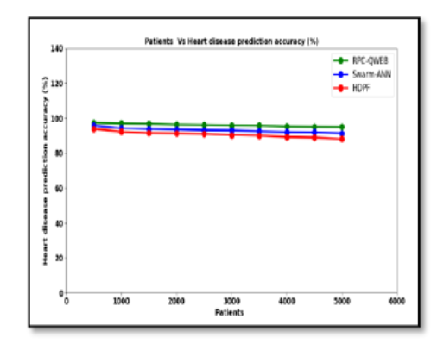


Indian Journal of Science and Technology
Year: 2024, Volume: 17, Issue: 6, Pages: 533-547
Original Article
P Muthulakshmi1*, M Parveen2
1Associate Professor, Cauvery College for Women (Autonomous), [Affiliated to Bharathidasan University], Tiruchirappalli, 620 018, Tamil Nadu, India
2Professor, Cauvery College for Women (Autonomous), [Affiliated to Bharathidasan University], Tiruchirappalli, 620 018, Tamil Nadu, India
*Corresponding Author
Email: [email protected]
Received Date:18 November 2023, Accepted Date:02 January 2024, Published Date:02 February 2024
Objectives: Over the past few years, there prevails an abundance wealth of big data obtained via patients' electronic health records. One of the leading causes of mortality globally is the cardiovascular disease. Based on the present test and history cardiovascular disease diagnosing of patients can be done. Therefore, early and quick diagnosis can reduce the mortality rate. To address their needs, several machine learning methods have been employed in the recent past in cardiovascular disease diagnosis and prediction. Previous research was also concentrated on acquiring the significant features to heart disease prediction however less importance was given to the time involved and error rate to identifying the strength of these features. Methods: In this work we plan to develop a method called, Regularized Principal Component and Quadratic Weighted Entropy Boosting (RPC-QWEB) for predicting heart disease. Initially in RPC-QWEB, relevant features are selected to avoid missing values in the input database by employing Regularized Principal Component Regressive Feature Selection (RPCRFS). Second, with the obtained dimensionality reduced features, Quadratic Weighted Entropy Boosting Classification (QWEBC) process is carried out to classify the patient data as normal or abnormal. The QWEBC process is an ensemble of several weak classifiers (i.e., Quadratic Classifier). The weak classifier results are combined to form strong classifier and provide final prediction results as normal or abnormal condition with minimal error rate. Findings: Experimental evaluation is carried out on factors with the cardiovascular disease dataset such as heart disease prediction accuracy, heart disease prediction time, sensitivity, error rate with respect to distinct numbers of patient data. The proposed RPC-QWEB method was compared with existing Heart Disease Prediction Framework (HDPF) and Swarm Artificial Neural Network (Swarm-ANN). Novelty: RPC-QWEB method outperforms the conventional learning methods in terms of numerous performance matrices. The RPC-QWEB method produces 3% and 5% increase in terms of accuracy and sensitivity and 7% and 29% reduced prediction time and error rate as compared to the existing benchmark methods. We may use this method to predict the heart disease at early stage there by we can reduce the death rate.
Keywords: Big data, Regularized Principal Component, Quadratic Weighted Entropy Boosting, Regressive Feature Selection, Classification
© 2024 Muthulakshmi & Parveen. This is an open-access article distributed under the terms of the Creative Commons Attribution License, which permits unrestricted use, distribution, and reproduction in any medium, provided the original author and source are credited. Published By Indian Society for Education and Environment (iSee)
Subscribe now for latest articles and news.